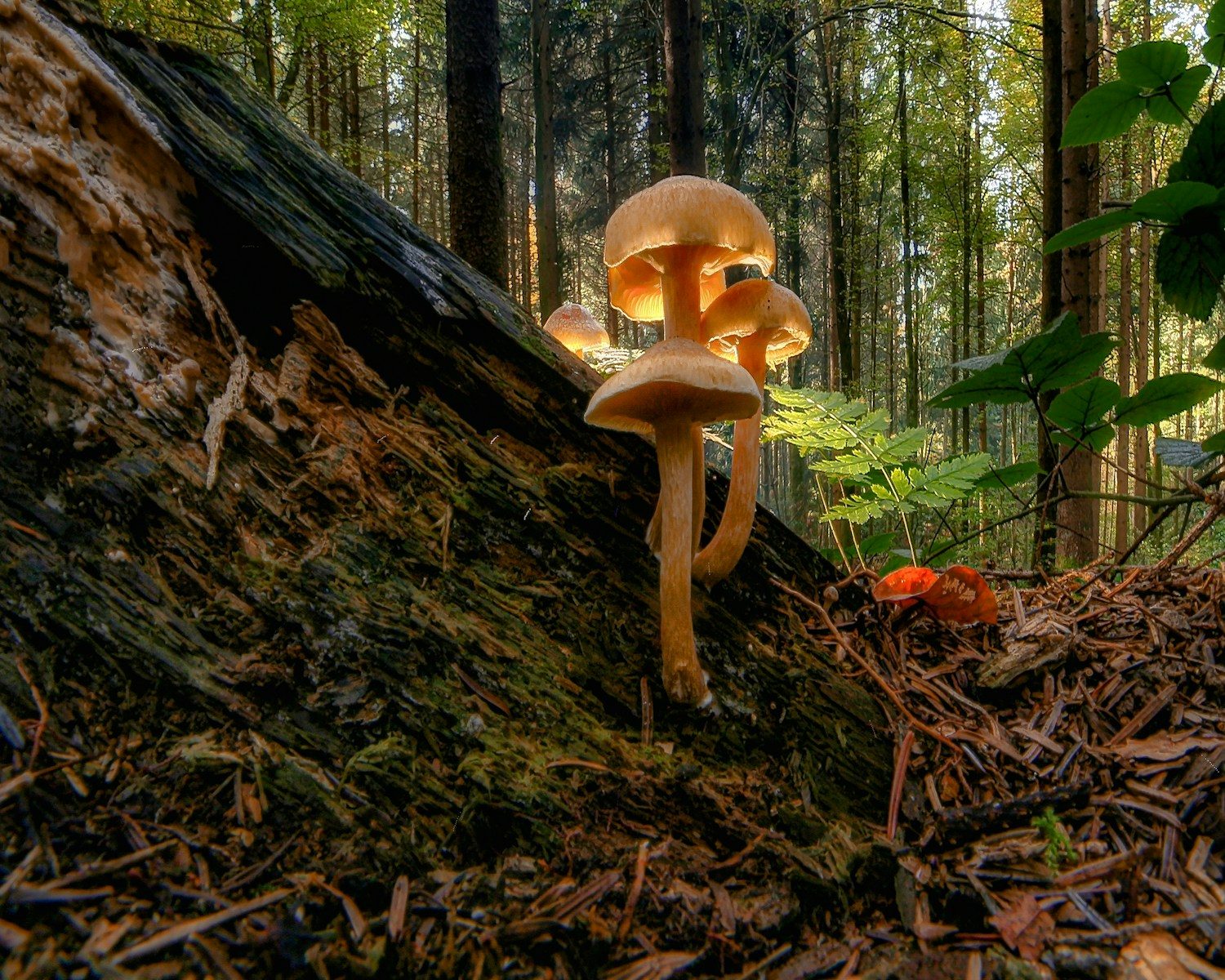Our Conscious Universe: Part III
By Ryan Castle
In previous installments of our “Conscious Universe” series, we have delved into the concept of consciousness, examining what it means and proposing that most animals clearly fit this criterion. However, animals are not drastically different from humans—they are living creatures with brains and easily understood sensory organs. But can consciousness exist in completely different forms of life? This article explores the idea of awareness and consciousness among plants, fungi, and even entire ecosystems.
The traditional view of plants and fungi as barely animate, wholly mindless automata is one of the oldest assumptions in science. Yet, this perspective is increasingly challenged by recent research. Studies have shown that plants are capable of sensing their environment, adapting, and even exhibiting behavioral preferences in what could be considered emotional reactions. Research suggests that plants can communicate with each other through chemical signals, warning of threats like herbivores or pathogens, and coordinate responses, giving rise to a new field called plant neurobiology.[i]
Even more profound discoveries have involved fungi, which display behaviors across wide networks of interconnected organisms connected by a network called the mycelium. These mycelial networks formed by fungi have been described as similar to the neural networks in our own brains.[ii] These networks can span vast areas, connecting multiple organisms and facilitating communication and resource sharing. For example, research has shown that mycelial networks can transfer nutrients between plants, allowing for a more efficient distribution of resources within an ecosystem. Additionally, fungi can respond to environmental changes by altering their growth patterns, effectively “deciding” where to allocate resources and planning colonies. Fungi have been shown to be aware of their surroundings, demonstrating memory, decision-making, and communication among other fungi about ideal conditions.[iii] They actively work to create those conditions, effectively encapsulating all the functions considered requisite for consciousness: awareness, communication, and adaptation. In fact, these behaviors suggest a level of awareness and decision-making that blurs the line between individual organisms and collective consciousness.[iv]
The idea that plants and fungi possess awareness is compelling, but even more dramatic is this notion that entire ecosystems might possess consciousness. Just as mycelial networks connect fungi, common mycorrhizal networks allow fungi to connect dozens, even hundreds, of different plants across a forest, using their root systems to create a system of communication, decision-making, and adaptation.[v] Although the extent of this network is still being studied, it is informally described as the “wood wide web” and is revolutionizing our understanding of life, organisms, and awareness.
The “wood wide web” represents a profound shift in our understanding of ecosystems. This network allows plants and fungi to share information and resources, creating a dynamic and interconnected system that operates much like a single organism. Through the mycorrhizal network, plants can send distress signals, share nutrients, and even coordinate their responses to environmental challenges.[vi] This level of communication and cooperation suggests that ecosystems can function as integrated wholes, with a collective consciousness that transcends individual organisms.
In this scenario, a vast ecosystem begins to resemble a single organism, similar to ourselves, but with a scale and design that is challenging for us to comprehend.[vii] Yet if an entire forest can be part of a greater whole, how is the fungal network unlike our nervous system, allowing awareness and agency? Just like our own bodies, these systems not only exist in the world but actively shape it, participating in a conscious and dynamic interplay. When we start to view an ecosystem as a conscious entity, we recognize that our traditional boundaries of individual consciousness are insufficient to describe the complex interconnections of life.
Understanding consciousness within ecosystems requires us to rethink our definitions and assumptions. It challenges the notion that consciousness is a property of individual brains, suggesting that it can instead emerge from systems and networks. This perspective invites us to consider the possibility that consciousness is a fundamental aspect of life, present not just in individual organisms but in the relationships and interactions that make up ecosystems.
In conclusion, we must begin to question what it means when consciousness is no longer limited to the individual. Just as we are conscious beings, the forest we walk through is likewise aware and interconnected. As science continues to explore the question of consciousness, we find ourselves at a crossroads of understanding and responsibility. The growing body of evidence challenges us to rethink our interactions with the world, fostering a deeper sense of empathy and respect for the diverse expressions of life around us.
Understanding our connection to these larger systems can profoundly change our perspective on life, nature, and the universe itself, revealing a world rich with conscious interactions and relationships. When we begin to see our connection is not simply between individuals and beings but within entire systems of existence, we start to grasp the fuller implications of our conscious universe.
References
[i] Brenner, E. D., Stahlberg, R., Mancuso, S., Vivanco, J., Baluska, F., & Van Volkenburgh, E. (2006). Plant neurobiology: an integrated view of plant signaling. Trends in plant science, 11(8), 413–419. https://doi.org/10.1016/j.tplants.2006.06.009
[ii] Adamatzky, A., Vallverdu, J., Gandia, A., Chiolerio, A., Castro, O., Dodig-Crnkovic, G. (2023). Fungal Minds. In: Adamatzky, A. (eds) Fungal Machines. Emergence, Complexity and Computation, vol 47. Springer, Cham. https://doi.org/10.1007/978-3-031-38336-6_26
[iii] Money N. P. (2021). Hyphal and mycelial consciousness: the concept of the fungal mind. Fungal biology, 125(4), 257–259. https://doi.org/10.1016/j.funbio.2021.02.001
[iv] Reber, A. S., Miller, W. B., Jr, Slijepcevic, P., & Baluška, F. (2024). The CBC theory and its entailments : Why current models of the origin of consciousness fail. EMBO reports, 25(1), 8–12. https://doi.org/10.1038/s44319-023-00004-6
[v] Barto, E. K., Weidenhamer, J. D., Cipollini, D., & Rillig, M. C. (2012). Fungal superhighways: do common mycorrhizal networks enhance below ground communication?. Trends in plant science, 17(11), 633-637.
[vi] Simard, S. W. (2018). Mycorrhizal networks facilitate tree communication, learning, and memory. In Memory and learning in plants (pp. 191-213). Springer, Cham.
[vii] Gorzelak, M. A., Asay, A. K., Pickles, B. J., & Simard, S. W. (2015). Inter-plant communication through mycorrhizal networks mediates complex adaptive behaviour in plant communities. AoB plants, 7.






